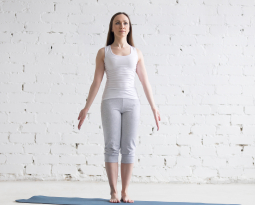
Diaphragmatic Respiration, a Key Element to Postural Correction
Diaphragmatic Respiration, or also known as “deep breathing” is done by contracting the diaphragm and expanding the abdomen while breathing. Not only can deep breathing keep you performing at your best, it can significantly help improve postural correction.
Considering 80% of the American Population presents with low back pain, would you agree that understanding the relationship between respiratory function and posture is vitally important? Right! I thought so. Understanding that relationship is key to maximizing the diaphragms efficiency and keeping your posture stable.
Intra-Abdominal Pressure & Postural Correction
There is a synergistic relationship between the action of the diaphragm, the pelvic floor, the abdominal wall, and the lower thoracic and lumbar extensors in controlling intra-abdominal pressure. For example, if the abdominal wall offers no resistance to the diaphragms contraction it would only displace itself downwards without any distinct increase in IAP. Or, if our posture is not good and we’re not taking in deep breaths to the abdomen, our pelvic floor is most definitely suffering. You can practice Diaphragmatic Respiration exercises as these type of breathing exercises are meant to help you use your diaphragm correctly while breathing.
Diaphragmatic Respiration & IAP
Many people may associate obesity with back pain, however according to Smith et al. in 2006, disorders of breathing and continence have a stronger association with back pain than obesity and physical activities do! Although obesity and physical activity have been argued to predict back pain, these factors are also related to incontinence and breathing difficulties. Breathing may interfere with the physiology of spinal control, and may provide a link to back pain.
Diaphragmatic Respiration Evaluation
Many professionals who are currently evaluating the diaphragm do so with the patient in the supine position. And although this does provide information about respiration, the information is more relevant to rib motion, than it is to diaphragmatic range of motion and intra-abdominal pressure. On another note, the patient should be evaluated while seated, and the practitioner will be behind the patient palpating the lower intercostal spaces of the ribs bilaterally.
On a Normal Test, the Patient Should Present with:
- Symmetrical activation that the Posture Expert can feel at their fingertips
- Expansion of the lower ribs laterally
- Widening of the intercostal spaces
- Ribs stay in the transverse plane and do not move superiorly towards the cranium
When the patient has faulty function of the diaphragm you will notice the activation is weak or absent, there is more rib movement superiorly instead of laterally, poor lumbar stabilization, Thoracic flexion, raised shoulders and clavicles.
If this continues, over time the patient will present with an anterior pelvic tilt and associated L5 hyperlordosis with hyperactivity of the extensor paraspinal musculature. You will also notice that the patient is a “chest breather” meaning that they raise their chest up and down with respiration and activate their SCMs, scalenes, and pectoral muscles while breathing.
















